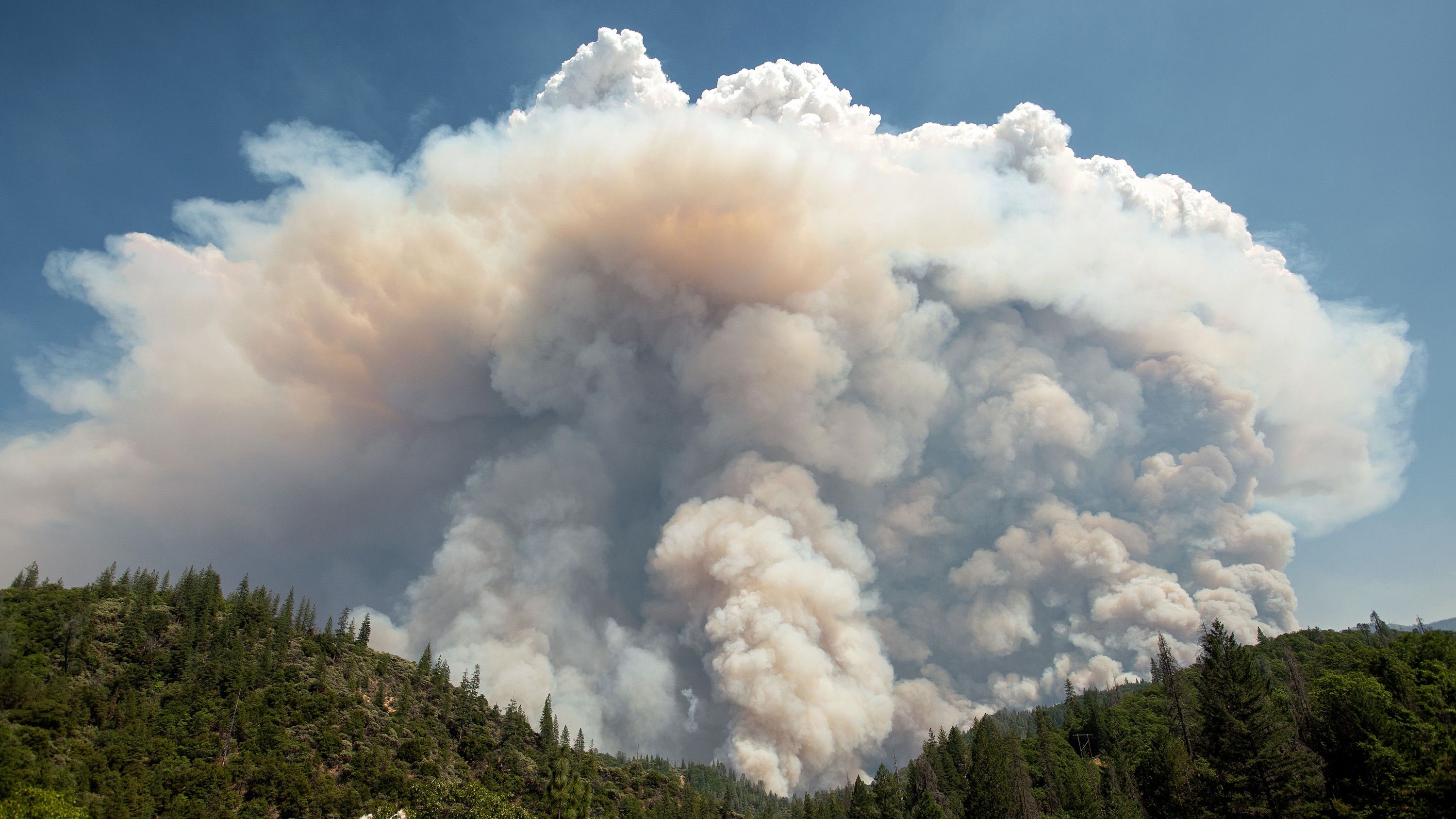The wildfires currently raging in the United States and Canada are creating ‘pyrocumulonimbus’ clouds, which have the potential to generate thunderstorms and spark additional fires. These intense weather phenomena are becoming more frequent, raising concerns among scientists and meteorologists.
Increase in Pyrocumulonimbus Cloud Formation
Before 2023, an average of 102 pyrocumulonimbus clouds were recorded globally each year, with 50 of them occurring in Canada. However, during the extreme wildfire season last year, Canada alone recorded 140 such clouds, according to a report published in the journal Nature.
Conditions for Pyrocumulonimbus Cloud Formation
Not all wildfires lead to the creation of pyrocumulonimbus clouds. These clouds form only during extremely hot wildfires or volcanic eruptions. For example, during the Australian bushfires of 2019-2020, temperatures exceeding 800 degrees Celsius led to the formation of these clouds.
Formation Process of Pyrocumulonimbus Clouds
- Initial Stage: Pyrocumulus Clouds
The intense heat from a wildfire warms the surrounding air, causing it to rise into the atmosphere. As this hot, buoyant air carrying water vapor, smoke, and ash ascends, it expands and cools. Once the water vapor condenses on ash particles, a grey or brown cloud, known as a pyrocumulus cloud or ‘fire cloud,’ forms. - Evolution to Pyrocumulonimbus Clouds
If there is sufficient water vapor and the upward movement of hot air intensifies, pyrocumulus clouds can evolve into pyrocumulonimbus clouds. These can reach heights of 50,000 feet and generate their own thunderstorms.
Effects of Pyrocumulonimbus Clouds
Despite producing lightning, pyrocumulonimbus clouds do not generate much rain. Consequently, they can ignite new wildfires many kilometers away from the main blaze. Additionally, these clouds can trigger strong winds, making the spread of wildfires faster and more unpredictable.
Unclear Reasons for Increased Frequency
The exact reasons for the increased frequency of pyrocumulonimbus clouds remain unclear due to the relatively new study of these clouds compared to other extreme weather events. However, scientists suspect that climate change plays a role.
Impact of Climate Change on Wildfires
Studies indicate that rising global temperatures are leading to more frequent and intense wildfires, which in turn increase the occurrence of pyrocumulonimbus clouds. According to David Peterson, a meteorologist at the US Naval Research Laboratory in California, the increased number of wildfires and favorable atmospheric conditions contribute to the higher likelihood of pyrocumulonimbus cloud formation.
Multiple-Choice Questions (MCQs):
- What are ‘pyrocumulonimbus’ clouds?
a) Clouds formed during rainstorms
b) Clouds that can generate thunderstorms and spark fires
c) Clouds formed during cold weather
d) Clouds that produce heavy rainfall
Answer: b) Clouds that can generate thunderstorms and spark fires - How many pyrocumulonimbus clouds were recorded globally on average before 2023?
a) 50
b) 102
c) 140
d) 200
Answer: b) 102 - What conditions are necessary for the formation of pyrocumulonimbus clouds?
a) Extremely cold temperatures
b) High humidity and low temperatures
c) Extremely hot wildfires or volcanic eruptions
d) Heavy rainfall and thunderstorms
Answer: c) Extremely hot wildfires or volcanic eruptions - What is the primary difference between pyrocumulus and pyrocumulonimbus clouds?
a) Pyrocumulus clouds are formed during rainstorms
b) Pyrocumulus clouds evolve into pyrocumulonimbus clouds under certain conditions
c) Pyrocumulonimbus clouds do not produce thunderstorms
d) Pyrocumulonimbus clouds are lower in altitude than pyrocumulus clouds
Answer: b) Pyrocumulus clouds evolve into pyrocumulonimbus clouds under certain conditions - Why do pyrocumulonimbus clouds not generate much rain despite producing lightning?
a) They contain no water vapor
b) The upward movement of hot air prevents rain formation
c) The cloud formation process removes all moisture
d) The temperatures are too cold for rain
Answer: b) The upward movement of hot air prevents rain formation
